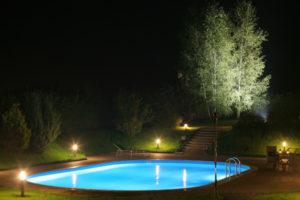
Pools are like relationships: complicated!
But a pool also is just like any other property investment: Maintain = Enjoy vs. Neglect = Regret.
Why It Matters: How Many Pools?
Pools are a big market all over the nation- and world! According to the Association of Pool and Spa Professionals (APSP), there are over 9 million pools, with 350,000 coming on line every year. California, Florida, Texas and Arizona comprise the top four states for swimming pools. Bet you can’t guess the next six states: New York, Ohio, Pennsylvania, Illinois, Massachusetts, and Virginia.
The Three Keys to Maintenance: Chemicals, Cleaning and Pump
Pool maintenance really isn’t too bad, it just requires commitment.
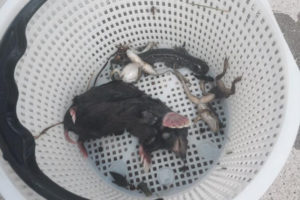
- Chemicals – Does “too much chlorine” cause stinging red eyes? Contrary to popular belief, the real cause of red eye is improper pH, a measure of the water’s balance of acid and alkali. If the water is too acidic, it will burn your eyes and it will corrode metal equipment; if the water is too alkali-ly, it will be murky and permit algae to form. Thankfully, chemical maintenance is a science, not an art. After the season’s grand opening, maintenance generally requires a weekly pH strip test and the addition of any number of ready-made, packaged chemicals to adjust pH.
- Cleaning – Most pools have systems to remove everyday debris (frogs, dirt, insects, tree debris, etc.) that gets into the pool water. The skimmer functions as a surface level cleaner; the vacuum removes non-floating debris at the bottom of the pool. Normal maintenance involves disposing of debris from the skimmer basket and vacuuming the bottom of the pool. Many pools are equipped with automatic vacuums that run on timer systems, and some pools have built-in jet systems which rotate in sequence and “push” debris to the main drain at the bottom of the pool.
- Pump – The pump provides the circulation necessary for the operation of the skimmer and vacuum. The pump circulates water in the pool and minimizes algae. A well-maintained pump should last 10+ years. Pump filters collect dirt and debris and should be cleaned per manufacturer recommendations.
And Now For Something Completely Serious: Safety
Most inspection issues we identify relate to safety. We don’t want to be a buzzkill, but the Centers for Disease Control (CDC) provides these startling statistics: “From 2005-2014, there were an average of 3,536 fatal drownings. One in five people who die from drowning are children 14 and younger. For every child who dies from drowning, another five receive emergency department care for non-fatal submersion injuries.”
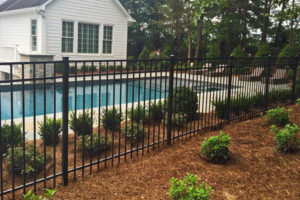
Yes, pools can be fun but only if they’re safe. We generally focus on two important safety considerations: access restrictions and supervision.
- Access – Restricting access is an effective method to prevent drowning. The CDC recommends installing a four-sided fence which separates the pool area from the rest of the property; fences should be a minimum of four feet high and employ self-closing and self-latching mechanisms. Other helpful measures include installing door locks which prevent a child from accessing the pool by herself, or alarms which activate if someone enters the pool area.
- Supervision – One of the most effective ways to prevent drowning among children is simple – always keep an eye on children near or in a pool. Don’t trust the “safety in numbers” myth – children can’t be relied upon to look after each other. And safety shouldn’t stop with the kids – an adult should exercise extreme caution if they risks swimming alone for exercise or pleasure. A good rule of thumb is to never swim alone. And last but not least, pools and alcohol don’t mix – at all.
It is also a good idea for adults and children alike to learn the swimming basics if owning and using a pool. The CDC recommends learning life-saving skills, such as swimming (floating, moving through the water) and cardiopulmonary resuscitation (CPR) as an added precaution. Don’t hesitate to use a life-jacket as well for weaker swimmers that want to enjoy the water, or any swimmers in tidal, natural bodies of water. Even a good swimmer can get swept away by the currents.
Pool Inspection & Issues to Keep an Eye On
Our data indicates that there are three main categories of pool-related inspection issues: structural, safety, and equipment.
- Structural Issues – Pool owners dread the phrase “structural issues” when they’re reviewing inspection results and recommended mitigation. But even if a pool is well maintained, surface cracks or deterioration may appear as a pool begins to age. Cracks indicate that the pool could be leaking or in danger of developing a leak, and further investigation is required. It is also important to take a look at the pool deck for evidence of cracking, heaving, or sloping. This type of damage can not only cause people to trip and fall, but problems with the pool deck could be caused by settlement problems in the area directly surrounding the pool, which may also reveal a leak in the pool or piping.
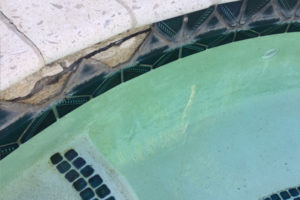
Fixing a hole where the rain came in… - Safety Issues – All issues related to safety are important, especially examination of potential safety breaches. Although code generally requires fencing, occasionally issues can arise in which the pool isn’t properly fenced, or where the gate and/or latch no longer work properly. Fences must be at least 4’ high with properly functioning self-closing and/or self-latching mechanisms.
- Equipment Issues – The pump is the heart of a pool’s system and must be checked regularly to ensure that it is functioning properly. Pump issues are evident by poor water circulation or floating flotsam and jetsam. Most issues related to pumps include leaking and corrosion, as well as the chance that the pump’s lines may contain air. The pool filter must be checked regularly (monthly). If the filter captures too much debris and the system’s pressure creeps up without mitigation, the pump’s life could be shortened because of the extra work required to circulate the water through dirty filters. The pump, skimmer/vacuum, and filter must all remain in good working condition if you want your pool to stay “happy and healthy.”
And Now Back To Summertime Fun!
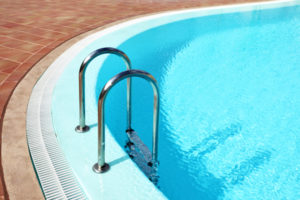
Owning and maintaining a pool can be a mixed bag, but it’s hard to argue with 9+ million homeowners – pools are popular. The happiest pool owners understand that the keys to happy pool ownership are regular maintenance and proper safety measures.
Pool equipment? Check! Pool chemicals? Check! Pool safety? Check!
